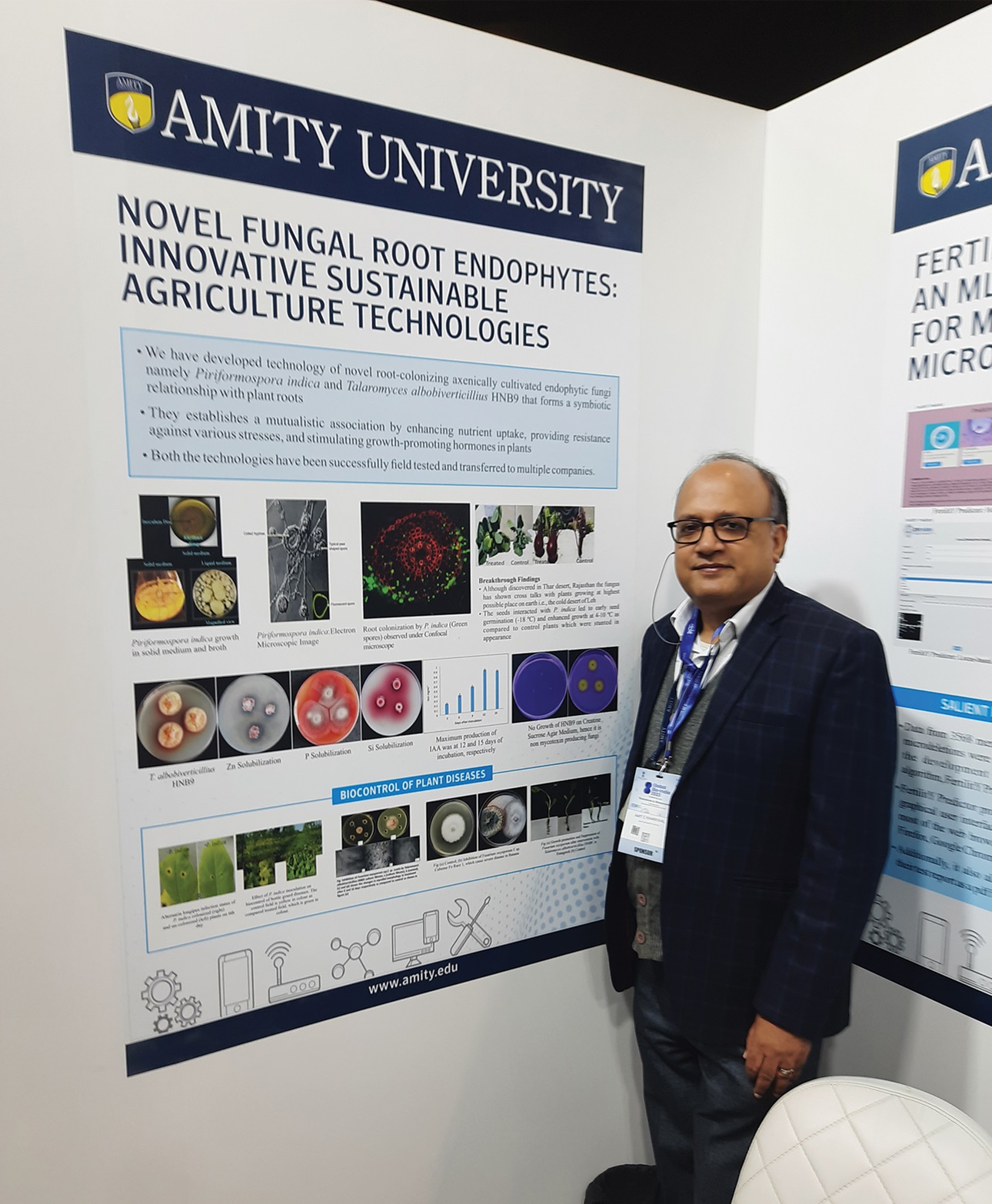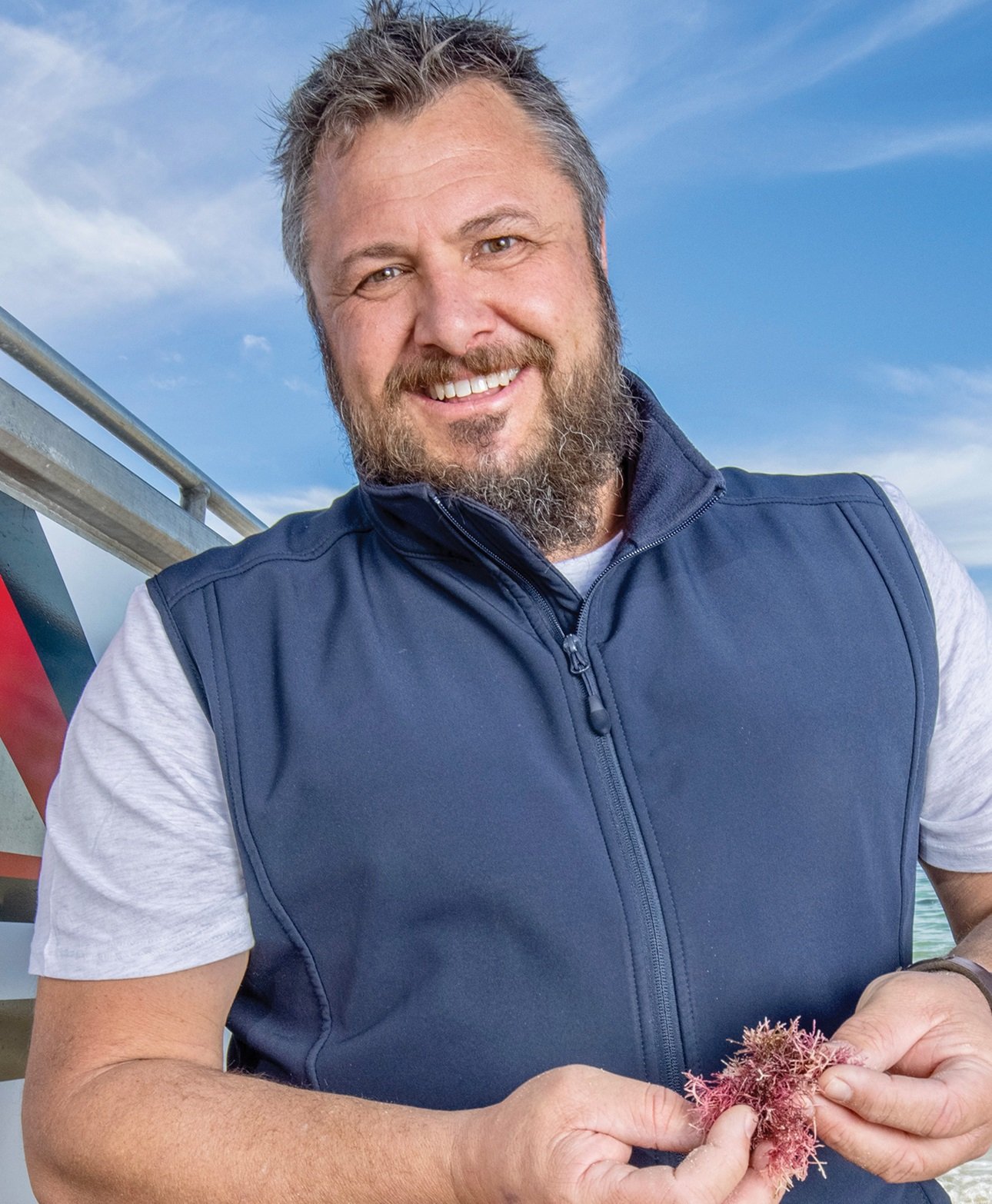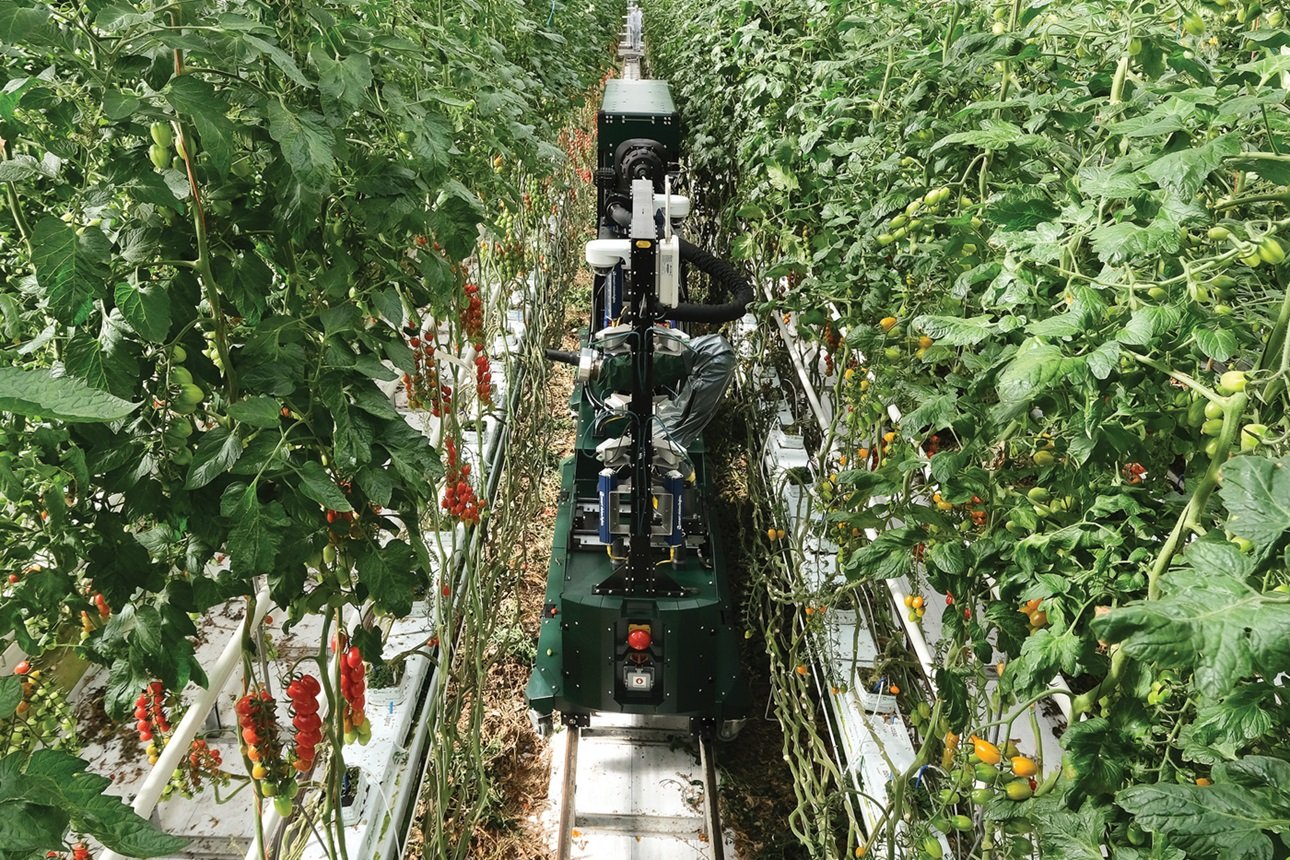Food Technology Magazine | Innovation
Mapping Food System Innovation
Here’s a look at six clusters of cutting-edge entrepreneurship around the globe.

© enot-poloskun iStock/Getty Images Plus
In a world where the food system is still racing to catch up with population growth, climate change, and food waste, innovation is crucial. Only by coming up with new products, technologies, and methods can the industry hope to meet the nutrition needs of a human population that isn’t expected to peak until it reaches more than 10 billion members by the middle of the century.
Where innovation happens—and why—have become crucial factors against this backdrop. Around the globe, concentrations have emerged to create deep domain knowledge, intellectual property, market acumen, and commercial promise in specific areas of innovation.
“We’re seeing multiple hot spots that have developed around particular technologies, making for an exciting time,” says Andrew Finkelstein, an associate of AgFunder, a food system venture capital firm.
What determines where these places are? Convenience, constraints, clustering, and capital are the four biggest factors.
Consider the convenience of location. Some hot spots stem logically from what’s around them, such as animal feed applications of certain seaweed species native to Australian waters and a spate of entrepreneurship in sun-drenched Kenya around solar energy applications to improve the food supply chain.
Responding to constraints is a second major causal factor: Many innovation hot spots are arising in reaction to what’s not there instead of what is there.
“What makes for innovation in this business is constraints,” says Rob Saik, founder of AGvisorPRO, a global ag-tech consulting service. “That could be the short growing season that fosters innovation in Canada, or the constraint of having so little land available that makes Singapore a leader in fermented proteins.”
Clustering has become a third major factor in where hot spots arise. A single researcher or startup can become a precipitator for an entire innovation ecosystem, such as the researcher whose work led to the creation of a handful of agricultural robotics startups in Pittsburgh, and the serial entrepreneur whose involvement helped launch a nutrigenomics industry in Silicon Valley.
Capital availability ends up becoming the most important factor for hot spots that can evolve from promise to prosperity, whether microfinanciers, venture capitalists, government programs, or some combination provides the fuel.
“Can you promote capital availability?” asks Johnny Ream, a partner at Stray Dog Capital, a venture capital fund that invests in early-stage food and biotech companies. “Can you put together funds that might be public investments, small amounts of capital that will push these things along and develop incentives for success?”
Some technologies have become so pervasive that it seems the entire world has gotten in on the act, such as work on alt-meats through precision fermentation. And, of course, many hot spots are centers for startups in multiple areas. But Food Technology has identified a dozen major hot spots around the world for specific types of food system innovation, including the six profiled here.
India: Regenerative Agriculture
Hyderabad, India, has become such a haven for software writers and other digital workers for American information technology companies that it’s nicknamed “Cyberabad.” But the capital of India’s Telangana state also is becoming a hot spot for a technology-based revolution in how the world’s second-largest national population is raising and marketing food.
The companies already benefiting from India’s agricultural transformation include Araku, a startup with retail stores in Paris, Bombay, and Bangalore that sells coffee grown by tribal farmers in India’s Araku Valley. Meanwhile, Sri BioAesthetics and AgriLife are homegrown startups that develop and sell microbial products that are boosting soil health and fertility on Indian farms.
Their rise has been coming in reaction to the problematic legacy of traditional Indian agriculture. About 90% of the nation’s 200 million farmers still till less than two hectares of land. The western-led “green revolution” of the 1970s prompted many Indian farmers to switch from nutrient-dense crops such as millet to rice and wheat. And the soil has been depleted on most farms because of reliance on chemical fertilizers.
A vanguard of universities and nonprofits has helped turn this situation by introducing farmers to regenerative agricultural practices, internet-based supply chains and advisory services, better business methods, and even the fruits of entrepreneurship.
Grihalakshmi Kakani helped pioneer this approach at Centurion University in Odisha, India, through an effort to return rural communities to production of millet. This includes training farmers in “only organic methods, which are more sustainable and align with the traditions and customs of the communities,” she says.
The program includes teaching farmers to get the most out of a diverse ingredient that was traditional because it alone could sustain many Indian communities. Now, Centurion is helping small towns set up processing facilities that turn millet into breakfast biscuits, cookies, and other value-added products with big national markets.
The Naandi Foundation has been working for two decades “to come up with models to make farmers profitable and play a [better] role in the food system so we can make a dramatic dent in the quality of life for India’s poor,” says Manoj Kumar, founding CEO of the largest multi-sector nonprofit in the country.
Naandi’s holistic approach relies on “biology-based solutions rather than chemical-based solutions” to agriculture, including “a microbiome system that improves nutrition to the plant and gives it more immunity” with ways to ensure that “the initial reduction in yields is offset by a very huge reduction in input costs.” Plus, farmers can profit from getting higher margins by gaining organic certification of their crops. Naandi also helps farmers navigate seasonal crop markets for maximum returns.
The Amity Institute of Microbial Technology is associated with India’s Amity University and has developed mycorrhizal fungi that help plants absorb water, transform minerals and nutrients, and tolerate stresses such as salinity and drought.
“We developed the technology for applying this to crops through seeds and seedlings and soil application, and various forms of irrigation, so the spores colonize the roots of the plants at the earliest and start giving beneficial responses to the plant,” says Deputy Director Amit Kharkwal. Five companies, including Sri and AgriLife, are commercializing the microbes.
BharatAgri is one of a handful of new startups in India that are adding a crucial piece to reformation of the food system: digital conduits so farmers can order seeds and other supplies online, along with expert advice, so they don’t have to travel and turn to traditional, commission-driven farm supply shopkeepers.
“We have an entire advisory model where recommended products are personalized to their crops, farm states, and weather conditions,” says cofounder Siddharth Dialani.
The Netherlands: High-Tech Farming
The Netherlands is characterized by historical traits that are very relevant to food system innovation in the 21st century, including scarce land, a capitalist business culture, a knack for trade, and a collaborative approach to agriculture.
Those strengths have manifested in making the country a global hot spot for advancement of indoor horticulture and farming as well as seed cultivation and export of agricultural and food technology in the face of a warming planet.
“We’re looking at resilient varieties, seeds for organic farms as well as for varieties that are more salt-tolerant,” Jaap Mazereeuw, managing director for the third-generation vegetable-breeding leader Enza Zaden, told The Washington Post. A startup, Plantlab, develops and operates custom-built indoor farms worldwide.
Of course, in the Netherlands, land has always been at a tremendous premium, with some 2,500 square miles of former sea- and river-bottom land having been reclaimed. Dutch capitalism helped transform the world, including a penchant for trade that began with exporting tulip bulbs 500 years ago.
“They’ve got such a small base, and competing in the global marketplace has been a challenge when they look at their little country versus others,” says Norm Janssen, business development officer for AGvisorPRO. “There’s always been this feeling of, ‘We’ve got to work together or we’re going to hang together.’”
Such an attitude also led the Dutch to form the first agricultural cooperatives and build one of the world’s best ag-research schools, Wageningen University. “The mindset,” Janssen says, “is, ‘We’ve got to be very innovative to be competitive.’”
Southern Africa: Insect Protein
There are lots of insects all around the world, and many that are being increasingly examined—if not actually eaten—as sources for human food. But one species in particular provides larvae that are an especially rich source of protein, for animal feed if not for people’s plates: black soldier flies.
And the best place in the world to grow black soldier fly larvae is Africa because its climate is most suitable for growing the larvae and for encouraging adult fly mating and egg hatching.
A handful of African startups have gotten a jump on this play in a growing global market for protein that likely never will be satiated. The projects underway tend to take waste from restaurants, university canteens and residence halls, and other ready sources and feed it to the flies, who then hatch larvae by the millions.
“We’re working on the next phase, which is to create a facility that automates the process of processing the flies into flour, which is substituted for soy in animal feed, and takes the frass [fly waste] from production and makes it into marketable fertilizer that we can make available to smallholder farmers,” says Ertharin Cousin, CEO of the nonprofit Food Systems for the Future.
But human consumption of black soldier flies might be long in coming. “It’s not a problem with the protein but with acceptance,” says Gunnar Sigge, head of the Department of Food Science at Stellenbosch University in South Africa.
Australia: Seaweed
Seaweed cultivation has taken off around the world as Western consumers’ appetites have grown. It was flagged by then Australian Prime Minister Scott Morrison in 2020 as a priority for the nation’s short-term economic plan and to build momentum for sustainable ocean-based industries.
Thus, a hot spot has emerged in Australia for a very specific niche in the burgeoning seaweed trade: Asparagopsis, a species that happens to be really good at discouraging methane production in cattle. The red macroalgae species is native to Australia and, when used as a feed additive, reduces cattle methane emissions by up to 90%. Most of it is grown by startups in Tasmania, located at Australia’s southern tip.
“We have seaweed momentum in Australia at the moment,” says Adam Main, head of external relations for CH4, a company based in Henderson, Nev., and named for the chemical handle for methane. “It’s a competitive advantage we don’t want to lose, like cognac and champagne in France.”
What CH4 and native startups found is that “there was a whole heap of benefits from seaweed that our cows and sheep have been eating freely for thousands of years,” Main says. Specifically, Asparagopsis interferes with the breakdown of fiber in a cow’s fourth stomach, virtually eliminating methane emissions and, to boot, making for “happier, healthier, and more productive cows, which give 20% more milk and meat.” CH4 has begun delivering its Methane Tamer animal feed supplement and has started construction of the world’s first factory for products from Asparagopsis, which will be raised on land via aquaculture.
Pittsburgh: Agricultural Robotics
For decades, Pittsburgh was defined as the “Steel City” until steelmaking began bleeding out in the 1980s and its overall industrial base faded. But what didn’t necessarily leave were thousands of engineers, technologists, and even digital mavens—nor the major research schools, Carnegie Mellon University and the University of Pittsburgh, that graduated them.
What’s happened over the ensuing decades is that Pittsburgh has reworked itself into the global center of the robotics industry. The biggest reason was that Carnegie Mellon offers the nation’s first degree and most prolific program in artificial intelligence, also recently adding a robotics degree and helping create a critical mass of capabilities that keep spawning startups.
“If someone is going to develop a career in robotics, they need to be participating in what’s happening in Pittsburgh,” says Joel Reed, who spent three years as head of the nonprofit Pittsburgh Robotics Network before going back into the industry last year. “There’s been a purposeful effort by economic development leaders, leaders at the state level, and those at major universities to create an entrepreneurial environment.”
What explains much of the city’s growing status as a mecca for agricultural robotics specifically is the presence of George Kantor, head of the Kantor Lab for robotics at Carnegie Mellon and chief scientist with Bloomfield Robotics, a startup that provides visual-inspection systems that growers of specialty crops can attach to their tractors or all-terrain vehicles to comb entire fields for crop characteristics, weed outbreaks, and insect infestations down to the square inch.
“People can build hardware and use AI, but we are knitting it all together and running a service in agricultural environments that can be rough and chaotic,” says Hayden Wolf, Bloomfield’s director of product and operations. “And building a ruggedized piece of hardware is its own engineering challenge. But we’ve got all the disciplines in the same place, together and with a shared background, and that’s important.”
Working with grape growers in France and California has been the company’s first commercial foray. Bloomfield, in turn, works with Four Growers, which fields autonomous robots that scan, identify, harvest, and package loose, picked snacking tomatoes within commercial greenhouses.
Other Pittsburgh ag-tech startups with varying ties to the city’s robotics brain trust include Leaficient, which produces energy efficient lighting for indoor ag; Rowbot Systems, which develops robotic systems for row agriculture; and Moss, designer and builder of autonomous vehicles for specialty crop farms.
The city also has a small but growing cadre of venture capital firms, notes Brandon Contino, CEO and cofounder of Four Growers. “There’s history and a lot of really good roboticists here,” he says. “And what’s surprising is that, outside of Pittsburgh, it gets rural really quickly, so you can understand the needs of agriculture very quickly.”
Singapore: Alternative Protein
Finding alternatives to animal-protein consumption on a resource-strapped planet has become the cause célèbre for the global food industry, and nowhere is it being pursued more actively—or more successfully—than in Singapore.
The nation of more than five million people and less than 300 square miles loves chicken, but there’s nowhere to raise them, and even imports of the birds have been crimped. Still, a national goal called “30 by 30” aims to produce 30% of Singapore’s nutritional needs locally by 2030.
Part of Singapore’s strategy has been to promote cellular production of animal proteins by encouraging startups and making it easy for them to flourish. It became the first nation to allow the sale of lab-grown chicken in late 2020.
“We’ve been selling in Singapore since late 2020 at a very small scale,” says Josh Tetrick, CEO of Eat Just, which introduced the GOOD Meat cultivated chicken brand there and has since then established a beachhead in U.S. restaurants. “We’re getting a sense of how consumers react to it and improving our product and processes, and raising additional capital.”
In fact, Singapore is racing China to open the world’s first cultivated meat processing facilities, with GOOD Meat planning to provide tens of thousands of pounds of “meat from cells” in its new plant, as the company notes.
Production of a broad range of animal proteins, including seafood, is also in Singapore’s plans, as are eventual exports of cell-based meat to nearby India. Fengru Lin and Max Rye founded TurtleTree, which uses precision fermentation to produce animal-free, high-value milk ingredients, in Singapore in 2019, and this fall the company marked a major milestone when its novel lactoferrin protein obtained self-affirmed Generally Recognized As Safe (GRAS) status from the U.S. Food and Drug Administration.
Singapore also is working with organizations such as the Food and Beverage Accelerator in Queensland, Australia, “for access to foreign markets,” says Chris Downs, director of the accelerator, which is helping the Australian government invest $160 million over four years in cutting-edge food innovations such as precision fermentation.ft












